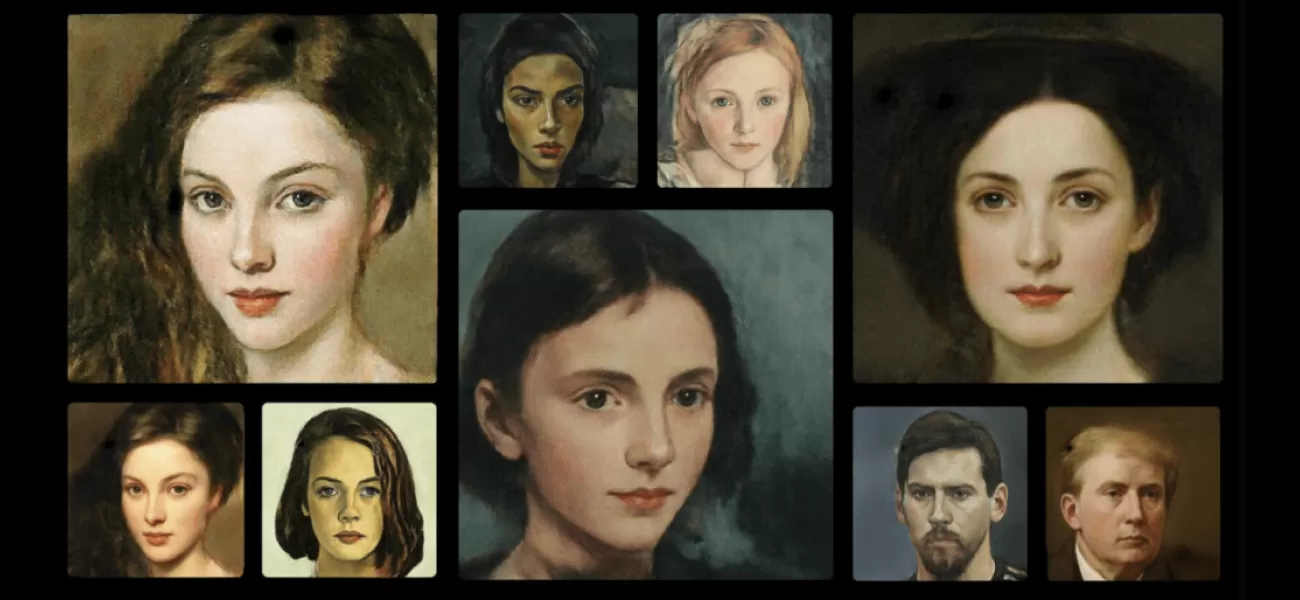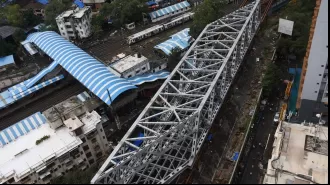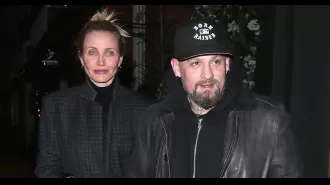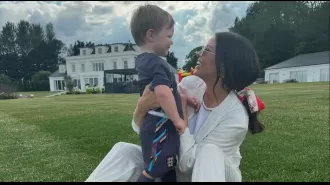Explore the best AI-powered portrait generators available in 2023 to create stunning images.
Explore the world of digital art w/ AI portrait generator tools, transforming the way we create compelling portraits.
July 13th 2023.

Create portraits from text prompts or existing images.
Varied artistic styles
Explore and experiment with different artistic styles.
Customization options
Specify attributes for personalized portraits.
High-quality results
Generate realistic portraits with accurate facial features.
5. DeepAI
DeepAI is a powerful AI-powered tool that specializes in generating realistic AI portraits. It utilizes a Generative Adversarial Network (GAN) model trained on a large dataset of celeb images to render lifelike portraits.
The GAN model works by analyzing the facial features of the input image and then transforming it into a realistic portrait with accurate details and textures. DeepAI’s AI portrait generator also offers users the ability to customize the portraits by adjusting the facial features and hairstyles.
Key features:
Realistic portrait generation
Generate lifelike portraits with accurate details.
Customization options
Adjust facial features and hairstyles to customize portraits.
Facial recognition
Detect and identify faces in images or videos.
Background removal/replacement
Remove or replace the background of a portrait.
More examples of AI in action
AI-powered tools are revolutionizing the digital art space, offering creatives the ability to explore and experiment with a variety of art styles and techniques. In addition to portrait generators, AI art tools have been developed for other applications such as animation, 3D modeling, and design.
How do I make an AI portrait?
Creating AI portraits requires knowledge of machine learning and computer vision techniques. Here is a brief overview of the process:
Step 1: Collect and prepare a dataset
The first step is to collect and prepare a dataset of images that represent the desired facial features. This dataset will be used to train the AI algorithm and should contain images of people with different facial features and expressions.
Step 2: Preprocess the dataset
The next step is to preprocess the dataset to prepare it for training. This involves a variety of techniques such as cropping, resizing, and normalizing the images.
Step 3: Train the GAN model
Once the dataset is prepared, it is time to train the GAN model. This involves feeding the dataset into the model and adjusting its parameters to optimize the results.
Step 4: Fine-tune the model
After the model has been trained, it is time to fine-tune it. This is done by testing the model on different datasets and making adjustments to its parameters to improve the results.
Step 5: Generate AI portraits
Once the model is trained and fine-tuned, it can then be used to generate AI portraits.
Step 6: Evaluate and refine
The final step is to evaluate and refine the generated AI portraits. This involves analyzing the portraits and making adjustments to the model parameters to improve the results.
Final thoughts
AI portrait generators are revolutionizing the digital art space, allowing artists and creatives to explore and experiment with a variety of art styles and techniques. By leveraging the power of AI and machine learning, these tools can generate lifelike portraits quickly and accurately. With the right tools and knowledge, anyone can create stunning AI portraits.
AI-powered and deep learning algorithms
Realistic portrait generation
Diverse artistic styles
High-quality results
Customizable facial features
5. DeepAI
DeepAI is a comprehensive AI platform that offers many AI-powered tools, including an AI portrait generator. This AI portrait generator uses deep learning algorithms to create hyperrealistic portraits from existing images and text prompts.
The DeepAI generator is trained on a dataset of millions of images and text pairs, giving it the ability to accurately capture the nuances of human faces. This allows the generator to create lifelike portraits that are indistinguishable from hand-drawn art.
Using the DeepAI generator, you can generate portraits based on descriptive text alone. Simply provide the AI system with a description of your desired portrait, and it will generate a realistic portrait that matches your specifications. Alternatively, you can upload a photograph of yourself and let the AI algorithm analyze the facial features and create a new image.
Key features:
Text-based and image-based generation
AI-powered and deep learning algorithms
Hyperrealistic portrait generation
Diverse artistic styles
High-quality results
Customizable facial features
More examples of AI in action
AI art generators are becoming increasingly popular, with many creative projects leveraging the power of AI to generate beautiful portraits. For example, the AI-powered art generator Prisma created an AI-generated portrait of the Mona Lisa. Additionally, the AI tool Artbreeder has been used to generate a portrait of Frida Kahlo.
How do I make an AI portrait?
Generating AI portraits is a complex process, and it requires a good understanding of machine learning and artificial intelligence. To create an AI portrait, you typically need to perform the following steps:
Step 1: Collect and prepare a dataset
The first step is to collect a dataset of images that includes portraits of humans. You can use publicly available datasets or create your own. Once you have collected a dataset, you need to preprocess and clean it by removing any duplicate images and ensuring the images are of good quality.
Step 2: Preprocess the dataset
Once the dataset is ready, you need to preprocess the images by performing operations such as cropping, resizing, and normalizing the images. This ensures the images are suitable for the machine learning algorithm.
Step 3: Train the GAN model
The next step is to train a Generative Adversarial Network (GAN) model. GANs are a type of neural network used for generative applications such as image generation. The GAN model is trained on the dataset of images to learn the features of human faces.
Step 4: Fine-tune the model
Once the GAN model is trained, it can be fine-tuned to create portraits of individual subjects. This step involves providing the model with additional information, such as facial characteristics and desired style, to customize the generated portraits according to your specifications.
Step 5: Generate AI portraits
Once the GAN model is trained and fine-tuned, you can generate AI portraits by providing the model with either an image or a description of the desired portrait. The AI model will then generate a portrait that meets your criteria.
Step 6: Evaluate and refine
The generated portraits should be evaluated and refined until you are satisfied with the results. This process involves making small adjustments to features such as color, texture, and lighting until you are happy with how the portrait looks.
Final thoughts
Generating AI portraits is an exciting process that is becoming increasingly accessible as AI technology continues to advance. With the right tools and knowledge, anyone can create stunning AI portraits with ease. By leveraging the power of AI, artists and creatives are unlocking new possibilities for creating digital art.
Varied artistic styles
Explore and experiment with different artistic styles.
Customization options
Specify attributes for personalized portraits.
High-quality results
Generate realistic portraits with accurate facial features.
5. DeepAI
DeepAI is a powerful AI-powered tool that specializes in generating realistic AI portraits. It utilizes a Generative Adversarial Network (GAN) model trained on a large dataset of celeb images to render lifelike portraits.
The GAN model works by analyzing the facial features of the input image and then transforming it into a realistic portrait with accurate details and textures. DeepAI’s AI portrait generator also offers users the ability to customize the portraits by adjusting the facial features and hairstyles.
Key features:
Realistic portrait generation
Generate lifelike portraits with accurate details.
Customization options
Adjust facial features and hairstyles to customize portraits.
Facial recognition
Detect and identify faces in images or videos.
Background removal/replacement
Remove or replace the background of a portrait.
More examples of AI in action
AI-powered tools are revolutionizing the digital art space, offering creatives the ability to explore and experiment with a variety of art styles and techniques. In addition to portrait generators, AI art tools have been developed for other applications such as animation, 3D modeling, and design.
How do I make an AI portrait?
Creating AI portraits requires knowledge of machine learning and computer vision techniques. Here is a brief overview of the process:
Step 1: Collect and prepare a dataset
The first step is to collect and prepare a dataset of images that represent the desired facial features. This dataset will be used to train the AI algorithm and should contain images of people with different facial features and expressions.
Step 2: Preprocess the dataset
The next step is to preprocess the dataset to prepare it for training. This involves a variety of techniques such as cropping, resizing, and normalizing the images.
Step 3: Train the GAN model
Once the dataset is prepared, it is time to train the GAN model. This involves feeding the dataset into the model and adjusting its parameters to optimize the results.
Step 4: Fine-tune the model
After the model has been trained, it is time to fine-tune it. This is done by testing the model on different datasets and making adjustments to its parameters to improve the results.
Step 5: Generate AI portraits
Once the model is trained and fine-tuned, it can then be used to generate AI portraits.
Step 6: Evaluate and refine
The final step is to evaluate and refine the generated AI portraits. This involves analyzing the portraits and making adjustments to the model parameters to improve the results.
Final thoughts
AI portrait generators are revolutionizing the digital art space, allowing artists and creatives to explore and experiment with a variety of art styles and techniques. By leveraging the power of AI and machine learning, these tools can generate lifelike portraits quickly and accurately. With the right tools and knowledge, anyone can create stunning AI portraits.
AI-powered and deep learning algorithms
Realistic portrait generation
Diverse artistic styles
High-quality results
Customizable facial features
5. DeepAI
DeepAI is a comprehensive AI platform that offers many AI-powered tools, including an AI portrait generator. This AI portrait generator uses deep learning algorithms to create hyperrealistic portraits from existing images and text prompts.
The DeepAI generator is trained on a dataset of millions of images and text pairs, giving it the ability to accurately capture the nuances of human faces. This allows the generator to create lifelike portraits that are indistinguishable from hand-drawn art.
Using the DeepAI generator, you can generate portraits based on descriptive text alone. Simply provide the AI system with a description of your desired portrait, and it will generate a realistic portrait that matches your specifications. Alternatively, you can upload a photograph of yourself and let the AI algorithm analyze the facial features and create a new image.
Key features:
Text-based and image-based generation
AI-powered and deep learning algorithms
Hyperrealistic portrait generation
Diverse artistic styles
High-quality results
Customizable facial features
More examples of AI in action
AI art generators are becoming increasingly popular, with many creative projects leveraging the power of AI to generate beautiful portraits. For example, the AI-powered art generator Prisma created an AI-generated portrait of the Mona Lisa. Additionally, the AI tool Artbreeder has been used to generate a portrait of Frida Kahlo.
How do I make an AI portrait?
Generating AI portraits is a complex process, and it requires a good understanding of machine learning and artificial intelligence. To create an AI portrait, you typically need to perform the following steps:
Step 1: Collect and prepare a dataset
The first step is to collect a dataset of images that includes portraits of humans. You can use publicly available datasets or create your own. Once you have collected a dataset, you need to preprocess and clean it by removing any duplicate images and ensuring the images are of good quality.
Step 2: Preprocess the dataset
Once the dataset is ready, you need to preprocess the images by performing operations such as cropping, resizing, and normalizing the images. This ensures the images are suitable for the machine learning algorithm.
Step 3: Train the GAN model
The next step is to train a Generative Adversarial Network (GAN) model. GANs are a type of neural network used for generative applications such as image generation. The GAN model is trained on the dataset of images to learn the features of human faces.
Step 4: Fine-tune the model
Once the GAN model is trained, it can be fine-tuned to create portraits of individual subjects. This step involves providing the model with additional information, such as facial characteristics and desired style, to customize the generated portraits according to your specifications.
Step 5: Generate AI portraits
Once the GAN model is trained and fine-tuned, you can generate AI portraits by providing the model with either an image or a description of the desired portrait. The AI model will then generate a portrait that meets your criteria.
Step 6: Evaluate and refine
The generated portraits should be evaluated and refined until you are satisfied with the results. This process involves making small adjustments to features such as color, texture, and lighting until you are happy with how the portrait looks.
Final thoughts
Generating AI portraits is an exciting process that is becoming increasingly accessible as AI technology continues to advance. With the right tools and knowledge, anyone can create stunning AI portraits with ease. By leveraging the power of AI, artists and creatives are unlocking new possibilities for creating digital art.
[This article has been trending online recently and has been generated with AI. Your feed is customized.]
[Generative AI is experimental.]
0
0
Submit Comment





